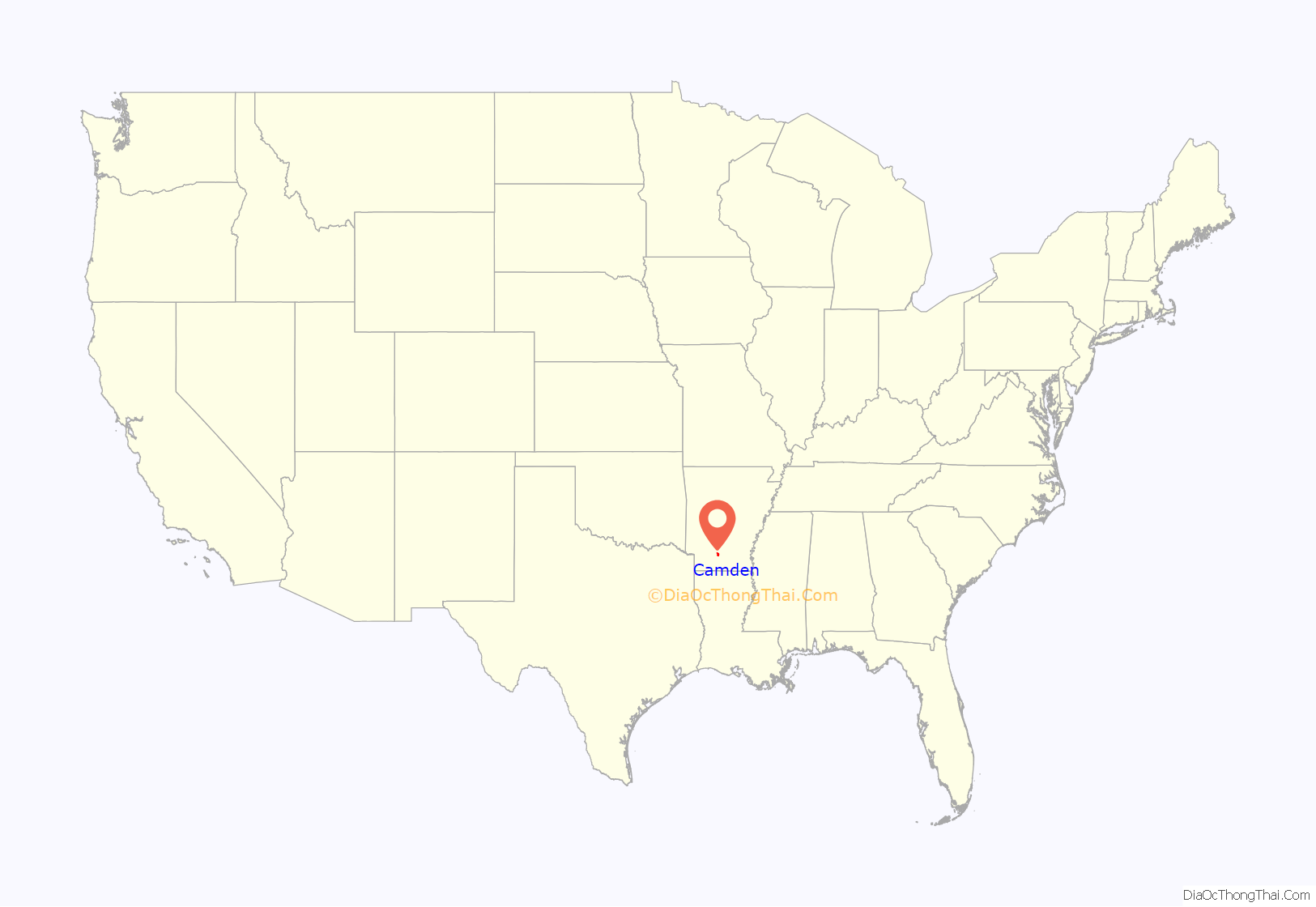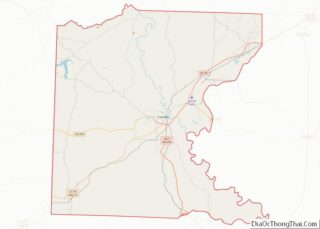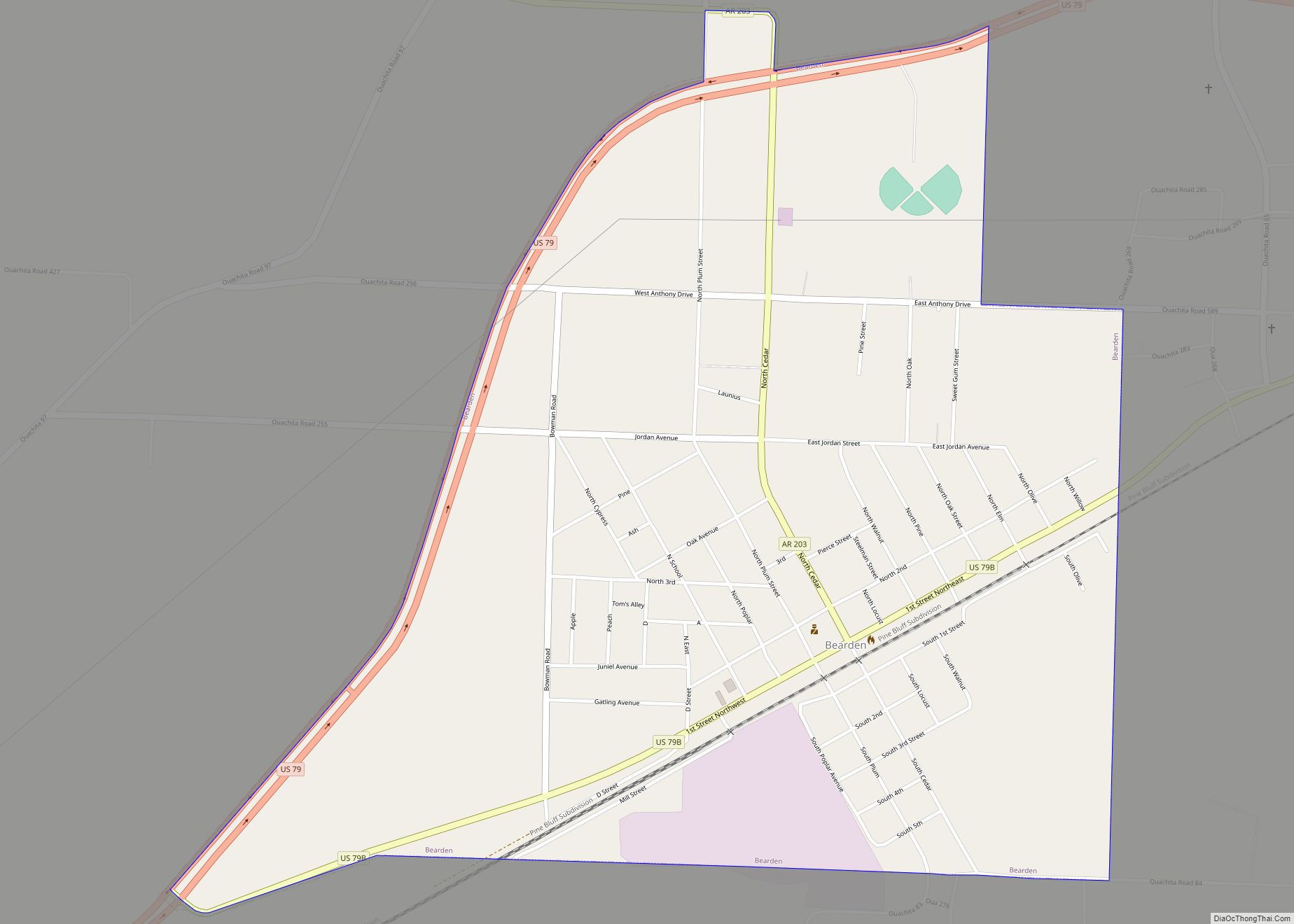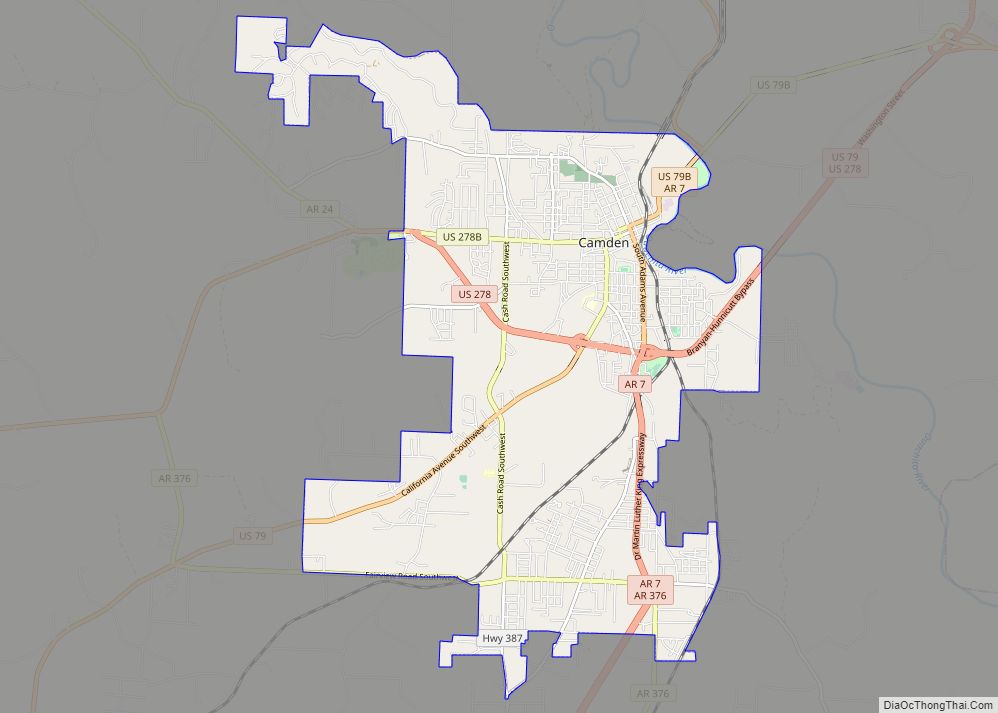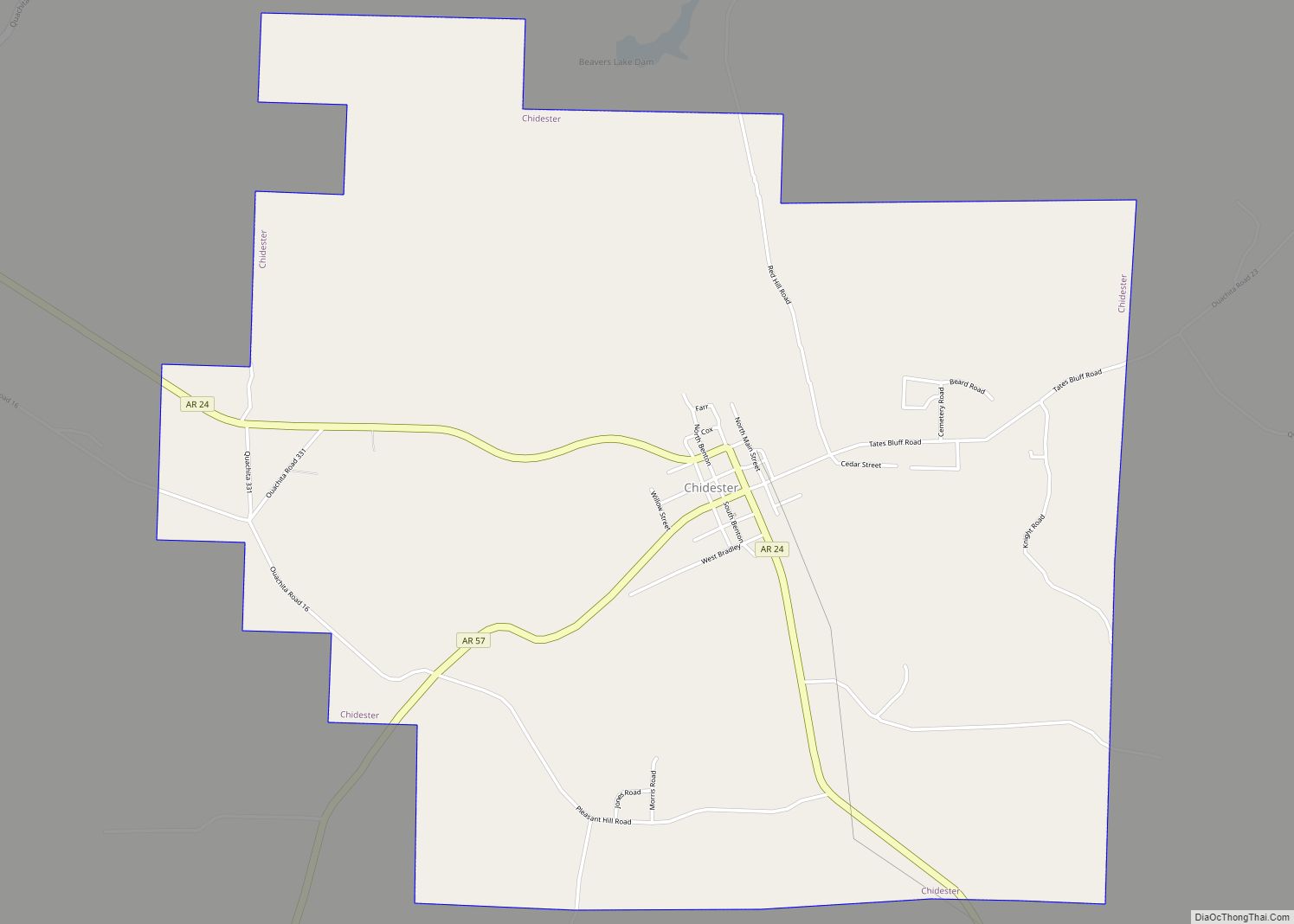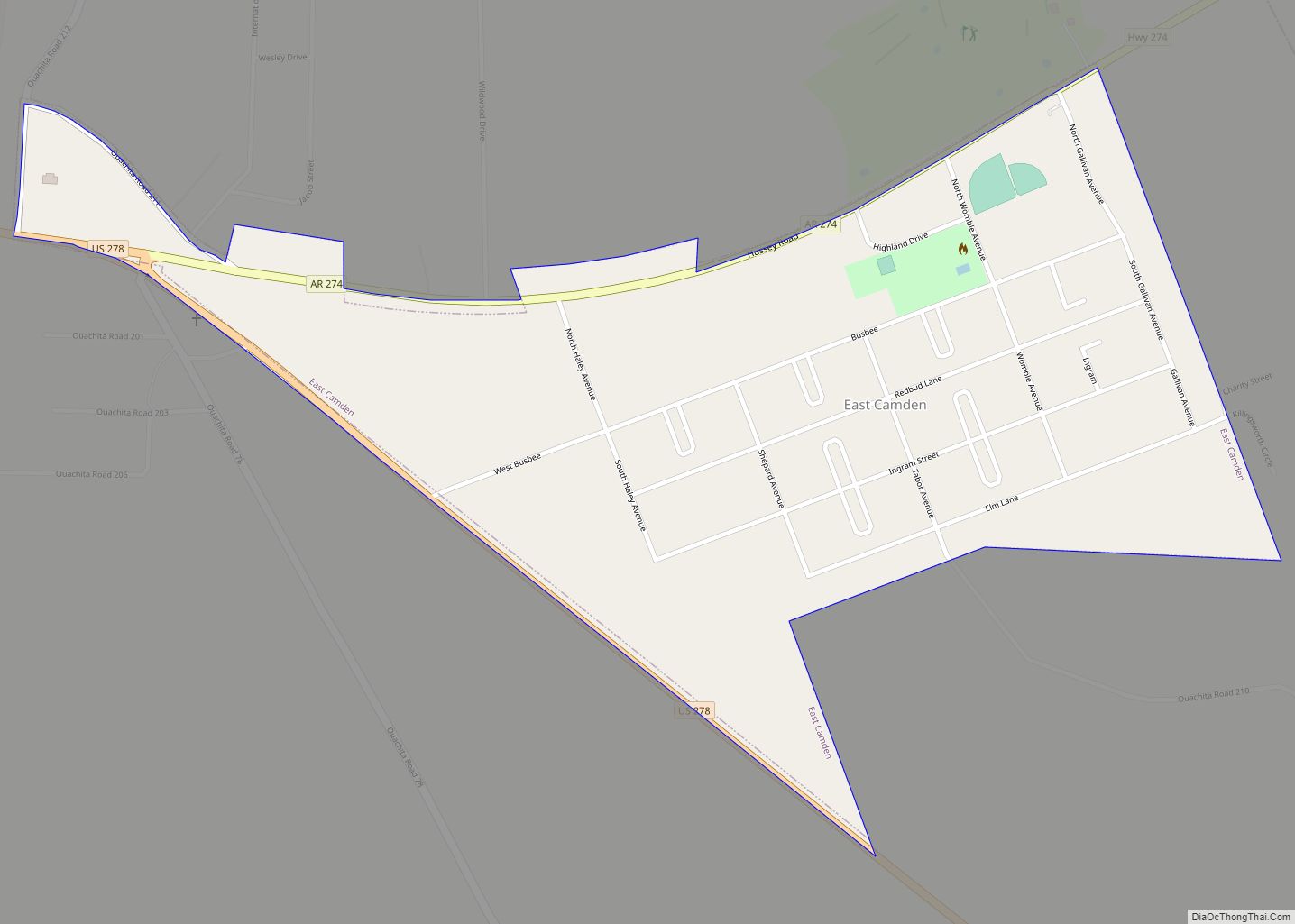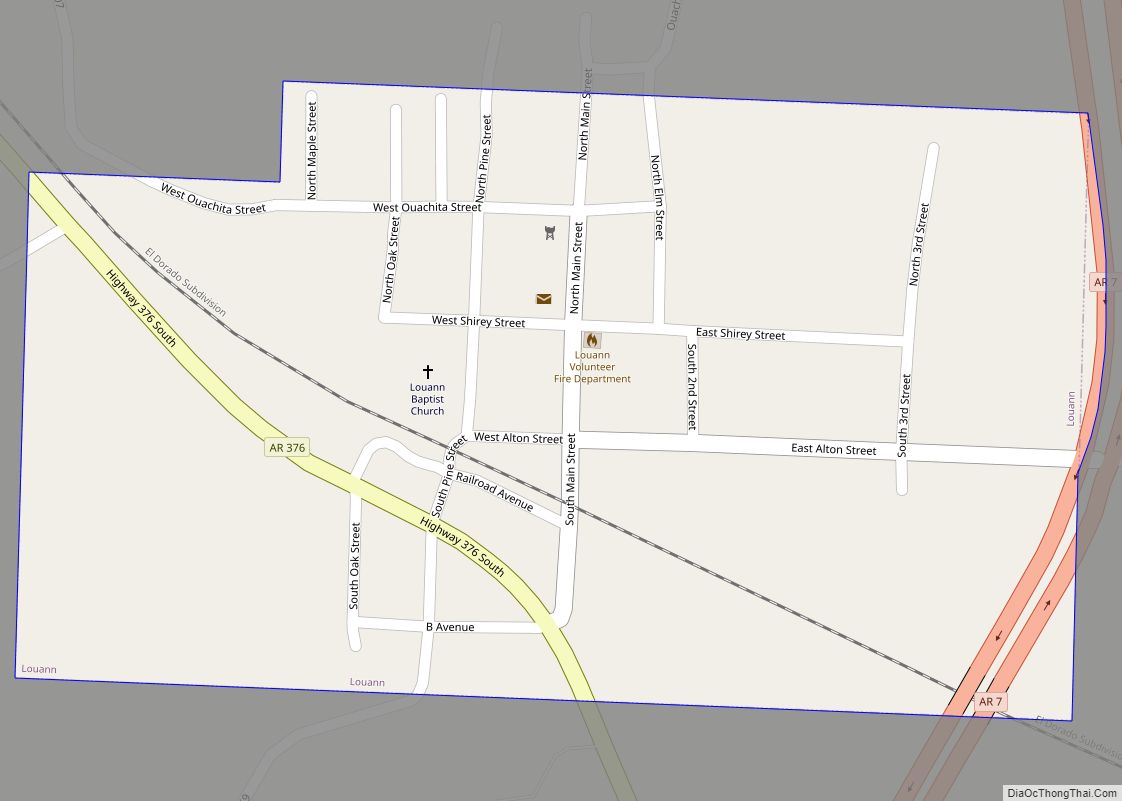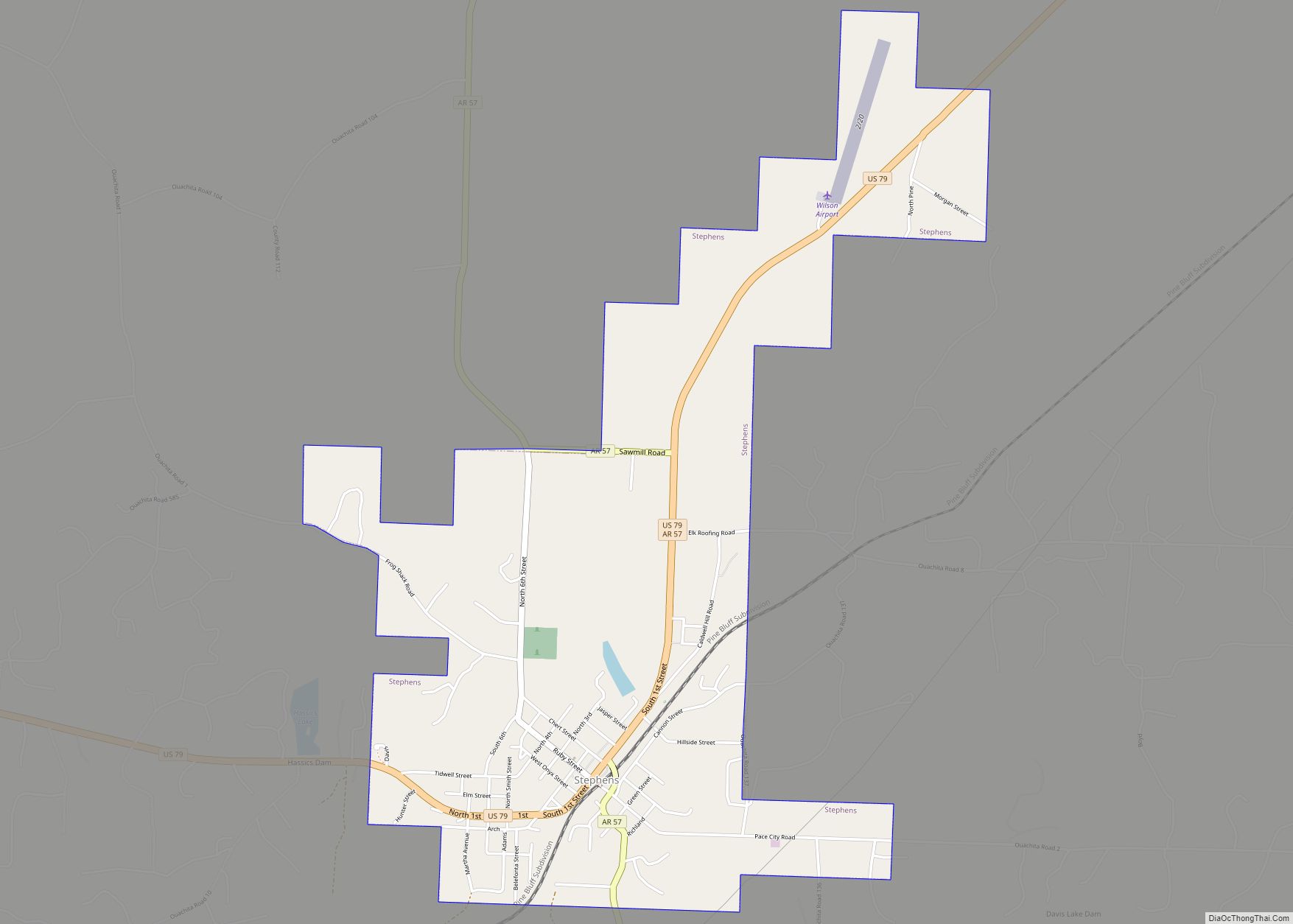Camden is a city in and the county seat of Ouachita County in the south-central part of the U.S. state of Arkansas. The city is located about 100 miles south of Little Rock. Situated on bluffs overlooking the Ouachita River, the city developed because of the river. The recorded history began in 1782 when a Spanish military post was established on the site of an old French trading post called Écore à Fabri. When Ouachita County was formed in 1842, American settlers changed the name to Camden. The city became an important port during the steamboat era when Camden became known as the “Queen City” of the Ouachita. In 1864, Camden became the unintended focus of the Red River Campaign, a major Civil War effort resulting in several significant battles. Camden is known as the producer of M142 HIMARS (High Mobility Artillery Rocket System) produced by Lockheed Martin.
In 2000, Camden had a population of 13,154, but it lost 7.4 percent of its residents and recorded 12,183 in 2010. Camden is the principal city of the Camden Micropolitan Statistical Area, which includes all of Ouachita and Calhoun counties.
| Name: | Camden city |
|---|---|
| LSAD Code: | 25 |
| LSAD Description: | city (suffix) |
| State: | Arkansas |
| County: | Ouachita County |
| Incorporated: | December 11, 1844(178 years ago) (1844-12-11) |
| Elevation: | 203 ft (62 m) |
| Total Area: | 16.62 sq mi (43.04 km²) |
| Land Area: | 16.53 sq mi (42.80 km²) |
| Water Area: | 0.09 sq mi (0.24 km²) |
| Total Population: | 10,612 |
| Population Density: | 642.14/sq mi (247.93/km²) |
| ZIP code: | 71701, 71711 |
| Area code: | 870 |
| FIPS code: | 0510720 |
| GNISfeature ID: | 0076505 |
| Website: | camden.ar.gov |
Online Interactive Map
Click on ![]() to view map in "full screen" mode.
to view map in "full screen" mode.
Camden location map. Where is Camden city?
History
European exploration
The explorers Father Jacques Marquette and Louis Joliet in 1673 and René-Robert Cavelier, Sieur de La Salle, in 1682 established French claims to the land they called Louisiana, which included what would become Camden, and found the Quapaw living at the confluence of the Arkansas and Mississippi rivers. The Quapaw claimed the territory that included this part of the Ouachita basin, but it was also influenced by both Caddo trade and culture. The old Indian trail called the Caddo Trace, leading from the Quapaw villages on the Arkansas River to those of the Caddo on the Red River, crossed the Ouachita River at what is now Camden. French hunters, trappers, and traders, who were drawn to the area by the abundant game, later established a rendezvous point on the high bluff above the crossing. The place became known as Ecore a Fabri or Fabri’s Bluff (later spelled Fabre).
In late 1762, France ceded Louisiana to Spain. In 1782, the Spanish governor sent a Frenchman named Jean Baptiste Filhiol, known to him as Don Juan Filhiol, to establish a civil and military post in the Ouachita district. Filhiol first chose to locate his headquarters at Ecore a Fabri with the expectation of creating a settlement there. After about two years, he decided to move downriver to the more central site of Prairie des Canots, present-day Monroe, Louisiana. These locations were noted in 1804 by the Hunter-Dunbar Expedition that explored the Ouachita River.
Early statehood
By 1819, Jesse Bowman, of future Alamo fame, was living at Ecore a Fabri, while the Tate brothers—Andrew, Richard, and George—came up the Ouachita on keelboats. Unable to go farther, they settled up river at a place now called Tate’s Bluff. In 1824, John Nunn moved to Ecore a Fabri and became one of the early permanent settlers. The Nunn brothers planned to pole freight and passengers upriver toward Washington, Arkansas. Steamboats arrived at Ecore a Fabri in the 1820s and provided it with a direct link to the cotton and commercial markets in New Orleans. Because it was located at the head of practical navigation, Ecore a Fabri became a commercial center and began to grow. Residents of Hempstead County began petitioning for a new road in 1821, and by 1828, the Camden to Washington Road was having additional work and maintenance done. By 1829, a large portion of Hempstead County, including Ecore a Fabri, was broken off by the legislature to form an expanded Union County. In 1842, Ouachita County, named for the river, was formed from the northwest portion of Union. Ecore a Fabri was chosen as the county seat, and its name was changed to Camden at the suggestion of one of the commissioners, Thomas Woodward.
Camden soon became the second-largest city in Arkansas. It was a mercantile center and a bustling river port served by frequent scheduled steamboats carrying passengers and freight. Most traveled between Camden and New Orleans. Camden was also the headquarters for John T. Chidester’s stagecoach line that served Arkansas, Louisiana and Texas. Chidester’s company carried the United States Mail from Memphis to Fort Smith for the Butterfield stage line.
American Civil War
During the Civil War, Camden was the focus of U.S. Army general Frederick Steele’s Red River Campaign of 1864. Steele moved south of Little Rock toward Shreveport, Louisiana, but got only as far as Camden, which he occupied while the Confederates pulled back to defend Washington, Arkansas. Forts Lookout and Southerland were built early in 1864, and the Camden Water Battery was built later in the same year, all to protect Camden from attack. After losing the engagement at Poison Spring and the action at Marks’ Mill, Steele had little choice but to retreat toward Little Rock. Camden and south Arkansas remained in Confederate hands until the end of the war.
20th century to present
Before the steamboat era faded, Camden had become a railroad town—served by the mainline of the St Louis-Southwestern Railroad (Cotton Belt) and by branch lines of the Missouri Pacific and the Rock Island railroads. The town remained an important cotton shipping depot through the early decades of the twentieth century. The South Arkansas oil boom of the 1920s resulted in a thriving economy.
In 1927, the International Paper Company built a processing mill at Camden, following development of south Arkansas’ lumber industry. For several decades, Camden was the headquarters of the Clyde E. Palmer newspaper chain, which included The Camden News, the Texarkana Gazette, the Hot Springs Sentinel-Record, and the Magnolia Banner News. The daily newspaper in Camden is the original flagship publication of WEHCO Media.
During World War II, Camden was home to one of Arkansas’s three contract training fields for primary pilots in the United States Army Air Forces. The base was named Harrell Field; ground was broken for it in 1942. The site became surplus to the Army’s needs in 1944 and was handed over to the US Navy for the Shumaker Naval Ammunition Depot. Thousands of new jobs were created. The Korean War generated new jobs and activity at the depot, which closed after war’s end. The city and county redeveloped its facilities and grounds into an extensive industrial area. This was the site of some major defense establishments and multiple smaller industries. A technical campus of Southern Arkansas University is also located there.
In the 1990s, post Cold War downsizing of the defense industry brought severe job losses—and resulting population decline—to the Camden area. The International Paper Company mill closed a few years later, resulting in more job losses. In recent years, however, a partial resurgence of defense contracts and the development of a diversified mixture of small business and professional activity have stabilized the town’s economy.
Camden is the home of Buckshot Smith who, at the age of 91, has been America’s oldest active duty police officer since 2020.
Ukraine has a significant demand for all of the rockets and missiles made at the Lockheed Martin Missiles and Fire Control facility in neighboring East Camden, including those used by the Army’s Patriot missile system.
Camden Road Map
Camden city Satellite Map
Geography
Camden is located on the Ouachita River, at the end of the navigable part of the river. According to the United States Census Bureau, the city has a total area of 16.5 square miles (43 km), of which 16.5 square miles (43 km) is land and 0.1 square miles (0.26 km) (0.36%) is water.
Climate
The climate in this area is characterized by hot summers and cool winters. According to the Köppen Climate Classification system, Camden has a humid subtropical climate, abbreviated “Cfa” on climate maps.
See also
Map of Arkansas State and its subdivision:- Arkansas
- Ashley
- Baxter
- Benton
- Boone
- Bradley
- Calhoun
- Carroll
- Chicot
- Clark
- Clay
- Cleburne
- Cleveland
- Columbia
- Conway
- Craighead
- Crawford
- Crittenden
- Cross
- Dallas
- Desha
- Drew
- Faulkner
- Franklin
- Fulton
- Garland
- Grant
- Greene
- Hempstead
- Hot Spring
- Howard
- Independence
- Izard
- Jackson
- Jefferson
- Johnson
- Lafayette
- Lawrence
- Lee
- Lincoln
- Little River
- Logan
- Lonoke
- Madison
- Marion
- Miller
- Mississippi
- Monroe
- Montgomery
- Nevada
- Newton
- Ouachita
- Perry
- Phillips
- Pike
- Poinsett
- Polk
- Pope
- Prairie
- Pulaski
- Randolph
- Saint Francis
- Saline
- Scott
- Searcy
- Sebastian
- Sevier
- Sharp
- Stone
- Union
- Van Buren
- Washington
- White
- Woodruff
- Yell
- Alabama
- Alaska
- Arizona
- Arkansas
- California
- Colorado
- Connecticut
- Delaware
- District of Columbia
- Florida
- Georgia
- Hawaii
- Idaho
- Illinois
- Indiana
- Iowa
- Kansas
- Kentucky
- Louisiana
- Maine
- Maryland
- Massachusetts
- Michigan
- Minnesota
- Mississippi
- Missouri
- Montana
- Nebraska
- Nevada
- New Hampshire
- New Jersey
- New Mexico
- New York
- North Carolina
- North Dakota
- Ohio
- Oklahoma
- Oregon
- Pennsylvania
- Rhode Island
- South Carolina
- South Dakota
- Tennessee
- Texas
- Utah
- Vermont
- Virginia
- Washington
- West Virginia
- Wisconsin
- Wyoming
